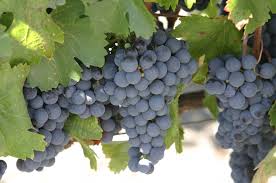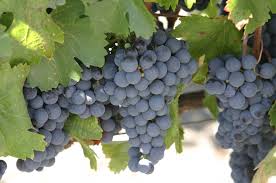
In the absence of measures to mitigate the impacts of global warming, climate change will also affect the flavors of our food as is being witnessed in crops that are basic to local economies, such as in the Argentine province of Mendoza.
A study that was disclosed by the National University of Cuyo (UNCuyo), during the Climate Change Forum held in October in Mendoza organised jointly with the United Nations Development Programme (UNCP)claimed that the rise in temperature dulls the color of purple garlic.
The study was done by horticulture expert Mónica Guiñazú at UNCuyo’s department of agrarian sciences.
A large part of the economy of this Andean province in west-central Argentina depends on crops like malbec grapes apart from the gastronomic considerations. More than six percent of the povince’s GDP is constituted of winemaking alone.
“In our regional economy, malbec is the most important variety. That’s why we chose it as an object of study,” said Emiliano Malovini, one of the researchers who carried out a study on “the effect of rising temperatures on the physiology and quality of malbec grapes” by the university’s vegetable physiology section and the National Council on Scientific and technical Research (CONICET).
Guiñazú said that nearly 90 percent of the garlic in Argentina is produced in Mendoza.
“We expect the quality of grapes will decline as a result of the climate change that is projected, as well as what is already happening, the very warm years we have had,” Malovini explained while talking about the case of malbec.
There is expected to be a temperature rise of two to four degrees Celsius in this part of South America by the end of the century, Malovini said citing forecasts by the Intergovernmental Panel on Climate Change IPCC).
Referring to anthocyanins, phytochemicals that play a crucial role in the color of red wine, he explained that there has been a noted reduction in quality during the preliminary results mainly in color.
“This is very important because a high-quality, high-end wine for export requires a certain minimal level of color in the grapes,” he said.
Other changes seen were an increase in alcohol content and a reduction in acidity.
As a consequence of the findings, counter measures of climate change such as hormone therapy and agricultural practices like restricting irrigation water in vineyards are being studied by Malovini.
Argentina the world’s third-largest garlic exporter of garlic, after China and Spain and the garlic growers in Mendoza are also worried. More than half of the exports of Argentina are agricultural products.
The study noted that with a five degree Celsius rise in temperature – and a 1.5 degree increase in the soil – would spell significant decoloration in purple garlic.
“In Argentina, it doesn’t matter if the color pales…but in the European Union they put a lot of importance on that. It is penalised,” he said.
10,000 direct and 7,500 indirect jobs are generated by garlic production and is a driver of the economy in the wine-producing, mountainous geographical region of Cuyo in west-central Argentina, especially Mendoza and the neighbouring province of San Juan.
Accounting for 0.88 percent of the global emission of green house gases, Argentina is the third biggest Latin American emitter of the principal cause of global warming, according to the World Resources Institute (WRI).
(Source:www.ipsnews.net)
A study that was disclosed by the National University of Cuyo (UNCuyo), during the Climate Change Forum held in October in Mendoza organised jointly with the United Nations Development Programme (UNCP)claimed that the rise in temperature dulls the color of purple garlic.
The study was done by horticulture expert Mónica Guiñazú at UNCuyo’s department of agrarian sciences.
A large part of the economy of this Andean province in west-central Argentina depends on crops like malbec grapes apart from the gastronomic considerations. More than six percent of the povince’s GDP is constituted of winemaking alone.
“In our regional economy, malbec is the most important variety. That’s why we chose it as an object of study,” said Emiliano Malovini, one of the researchers who carried out a study on “the effect of rising temperatures on the physiology and quality of malbec grapes” by the university’s vegetable physiology section and the National Council on Scientific and technical Research (CONICET).
Guiñazú said that nearly 90 percent of the garlic in Argentina is produced in Mendoza.
“We expect the quality of grapes will decline as a result of the climate change that is projected, as well as what is already happening, the very warm years we have had,” Malovini explained while talking about the case of malbec.
There is expected to be a temperature rise of two to four degrees Celsius in this part of South America by the end of the century, Malovini said citing forecasts by the Intergovernmental Panel on Climate Change IPCC).
Referring to anthocyanins, phytochemicals that play a crucial role in the color of red wine, he explained that there has been a noted reduction in quality during the preliminary results mainly in color.
“This is very important because a high-quality, high-end wine for export requires a certain minimal level of color in the grapes,” he said.
Other changes seen were an increase in alcohol content and a reduction in acidity.
As a consequence of the findings, counter measures of climate change such as hormone therapy and agricultural practices like restricting irrigation water in vineyards are being studied by Malovini.
Argentina the world’s third-largest garlic exporter of garlic, after China and Spain and the garlic growers in Mendoza are also worried. More than half of the exports of Argentina are agricultural products.
The study noted that with a five degree Celsius rise in temperature – and a 1.5 degree increase in the soil – would spell significant decoloration in purple garlic.
“In Argentina, it doesn’t matter if the color pales…but in the European Union they put a lot of importance on that. It is penalised,” he said.
10,000 direct and 7,500 indirect jobs are generated by garlic production and is a driver of the economy in the wine-producing, mountainous geographical region of Cuyo in west-central Argentina, especially Mendoza and the neighbouring province of San Juan.
Accounting for 0.88 percent of the global emission of green house gases, Argentina is the third biggest Latin American emitter of the principal cause of global warming, according to the World Resources Institute (WRI).
(Source:www.ipsnews.net)





